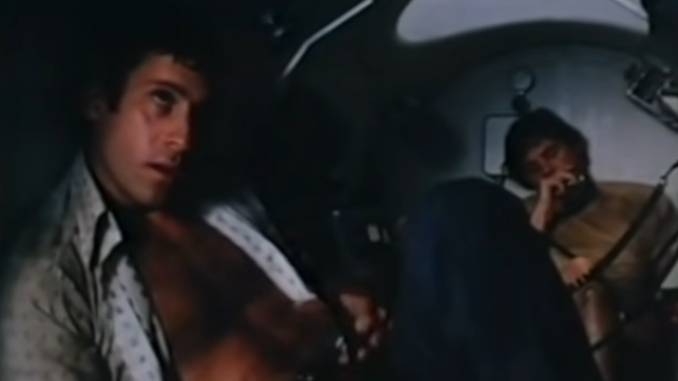Trapped Beneath the Sea: A Great Small-Scale Submersible Disaster Movie

From 1969 to 1975, ABC put out weekly films. They functioned as TV pilots, testing grounds for up-and-coming filmmakers, and places for new and old stars to shine. Every month, Chloe Walker revisits one of these movies. This is Movie of the Week (of the Month).
If there’s a single raison d’être for disaster movies, surely it’s the spectacle—the chance to use the biggest, best, most special effects to make the viewer feel like they’re experiencing a hurricane/inferno/volcano/plane crash/earthquake from the safety and comfort of their seat. (Why we would want that kind of vicarious traumatic experience is another question altogether, but the massive box office success of films from The Towering Inferno to a large part of The Rock’s oeuvre suggest we do!) So what happens when you just don’t have the money to achieve that spectacle? Well, in true ABC MOTW fashion, you often get something wonkier, decidedly less glossy, and yet charming nonetheless.
Take Skyway to Death. A bunch of disparate people get trapped in a cable car that has been sabotaged by an ex-employee looking for revenge. Does it ever seem that anyone is in any real jeopardy? No! Is the rear projection so janky as to be downright comical? Yes! And yet the story of this group becoming the best of friends, hundreds of feet above the earth, is so sweet-natured that it’s still tremendously endearing.
Then there’s The Day the Earth Moved. It’s inescapable that the central earthquake sequence is largely achieved by getting the actors to just wobble around a bit. Nevertheless, the way the movie draws the small afflicted location—a dusty, dead speed trap town owned by an eccentric millionaire sure that a Santa’s grotto is the key to its revivification—is extraordinarily vivid.
Still, while budgetary constraints may have prevented the ABC disaster movies from garnering their thrills in the same way as their big screen cousins, that doesn’t mean they were always completely devoid of tension. One MOTW, from the slot’s final season, is notably gripping.
Based on the fatal incident on the 1973 Johnson Sea Link submersible (and bearing an uncanny similarity to the Titan’s 2023 tragedy…), 1974’s Trapped Beneath the Sea tells the story of a research submersible trip gone terribly wrong. The vessel in question completes the first stage of its mission—laying containers to test sea life by an old shipwreck—without incident. But when it makes the return trip the following day, a jumble of wires and technical malfunctions prevents the craft from ascending back to the surface.
-

-

-

-

-

-

-

-

-

-

-

-

-

-

-

-

-

-

-

-

-

-

-

-

-

-

-

-

-

-

-

-

-

-

-

-

-

-

-

-








































